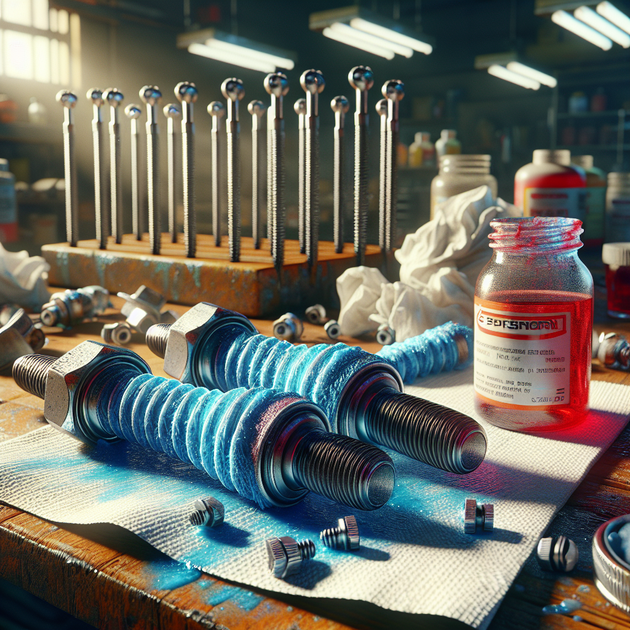Ever ordered new parts for your car and wondered if you’re using them right—especially when the instructions are vague or the packaging is different? That little bottle in the box might look like grease or lube at first glance…but sometimes it’s not. So what really happens if you accidentally put thread locker on your tie rod ball joint?
What Is Thread Locker—and Why Is It a Problem for Ball Joints?
Thread locker is that blue or red goo designed to keep bolts from loosening over time. Mechanics use it all the time for fasteners that face vibration or stress—think suspension bolts or engine parts. But here’s the catch: it should never be used as a lubricant or inside moving joints.
Ball joints—like those found in your inner and outer tie rods—need to move freely with grease inside. If you accidentally put thread locker in there instead of grease (especially red thread locker), you could risk locking up the movement or damaging the part over time.
How Bad Is It If You Put Thread Locker on a Tie Rod Ball Joint?
So you’ve smeared that red liquid all around the ball joint before realizing it isn’t lubricant. Is your new tie rod toast? Not necessarily! Here’s what could happen:
- Thread locker can harden inside the joint, causing stiffness
- It may block grease from doing its job
- If left unchecked, it might lead to premature wear
- But if caught early (before driving), there’s usually hope
The good news is that unless the vehicle has been driven long enough for the thread locker to cure inside the joint (usually takes several hours), you can often clean it out and start fresh.
How to Fix an Inner Tie Rod Mistake with Thread Locker
Here’s what I learned after making this exact mistake with my Dodge Caliber:
1. **Don’t panic** – Most types of thread locker take time to set up.
2. **Clean thoroughly** – Use brake cleaner (or another degreaser) and a towel to wipe out every bit of visible thread locker from the ball joint area.
3. **Work all angles** – Move the ball around while cleaning so you get into every nook.
4. **Re-grease** – Apply fresh grease liberally once everything is dry.
5. **Test movement** – The joint should feel just as smooth as before.
If there’s still stiffness or grinding after cleaning and regreasing—or if you notice any odd noises during driving—it may be safer to replace the part.
A Real-World Anecdote (And What I Learned)
Here’s my story in a nutshell: I got two inner tie rods from Rock Auto for my 2011 Dodge Caliber—one had blue threadlocker pre-applied; one came with a mystery vial of red liquid (no label). Online guides mentioned adding grease during install, so I assumed that was what this was. Even a reverse image search seemed to agree!
I slathered it into the joint…and then realized something felt off. A quick part number search told me the truth—it was red threadlocker meant for threads only! My heart sank—I figured I’d ruined my brand-new part.
But thanks to some quick advice online, I grabbed brake cleaner and wiped out every bit of gunk I could reach before adding real grease back in. The result? The joint felt perfectly normal again—no unusual stiffness or drag at all.
- Lesson learned: Always check product numbers before using anything unfamiliar.
- Don’t rush jobs: Take your time with parts you haven’t worked with before.
- Cleanup saves parts: Acting quickly can make all the difference.
The Bottom Line: Is Your Part Ruined?
If you catch yourself applying threadlocker where grease should go—don’t freak out! As long as you clean things up before driving much (or at all), most of the time your tie rod isn’t doomed. Just remember these tips:
– Double-check every chemical or vial before using
– Clean thoroughly with brake cleaner if mistakes happen
– Grease liberally after cleaning
– Pay attention to how things feel when installed
So…what’s your worst car repair mix-up? Share below—I promise you’re not alone!

Leave a Reply